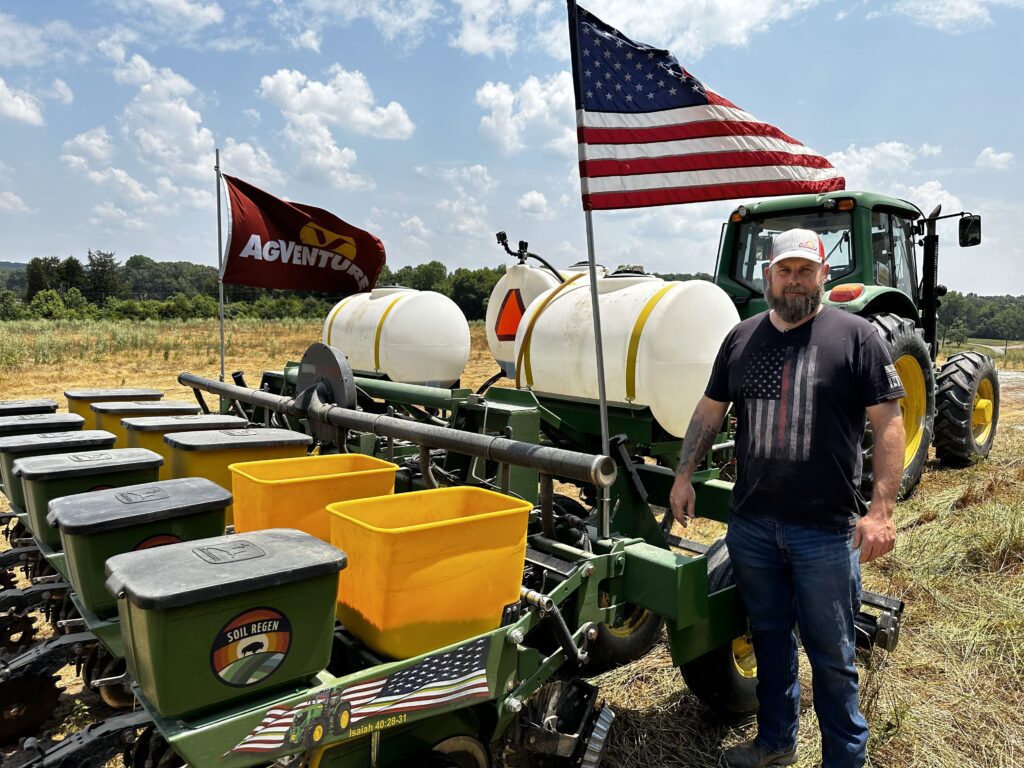 Russell Hedrick always thought he’d be a career firefighter. Sure, he was interested in farming, but as a career? He wasn’t so sure.
Russell Hedrick always thought he’d be a career firefighter. Sure, he was interested in farming, but as a career? He wasn’t so sure.
“I just figured I’d farm about 50 to 100 acres on the side, just to enjoy some therapeutic tractor time,” he said.
The 2022 North Carolina Corn Yield Contest Dryland Division winner set what many believe to be a world-record dryland yield with 459.51 bushels per acre in Catawba County, North Carolina. A first-generation farmer, Hedrick has gone from fighting fires to lining up speaking engagements with agricultural audiences around the world over the last decade.
When Hedrick started farming, that’s all it was: farming. But when he started raising 200+ bushel/acre corn in a state that averages 144 bushels/acre[1], he began to gain a following across the state of North Carolina. Then in 2015, he was invited to Kansas to speak at a week-long USDA function.
“That was my first trip outside the state of North Carolina,” he recalled. “Since then, I’ve been to 46 states and nine countries and I’ve seen farms all over the world. Wherever I go, there is always something that people are struggling with and trying to understand, like nutrition or pest management. Farmers are often hesitant to step out and try new things, so we tell them that spending a few dollars here and a few dollars there and trying out some of these practices to find out what works on their ground is the best way to learn. And typically farmers have had success with that.”
Hedrick added that many people in the industry understand the science behind why things work the way they do, but they don’t understand the production side of it. “They don’t understand how you mix things in a sprayer or put it in a planter,” he explained. “That helped us relate to other farmers, to teach them about these management strategies and how to implement them on their farms.”
 In 2016, Hedrick won his first state yield contest, also in the dryland division, bringing in 318.15 bushels/acre on his Catawba County farm. “It was the first time we went over 300 bushels/acre,” he recalled. In the years since that win, he has adjusted many of his best practices through on-farm trials and learning from available resources.
In 2016, Hedrick won his first state yield contest, also in the dryland division, bringing in 318.15 bushels/acre on his Catawba County farm. “It was the first time we went over 300 bushels/acre,” he recalled. In the years since that win, he has adjusted many of his best practices through on-farm trials and learning from available resources.
“If I tell somebody what we’re doing and it helps them, that’s great,” he said. “Maybe they farm better than I can, and maybe they’ll be willing to share that knowledge back. There’s no proprietary secret to what we do.”
In fact, many of the practices that Hedrick currently implements are based on his own trial and error. “There are so many things we’ve learned from so many different people over the years,” he said. “We have just tried them out, and honestly, it’s taken us 4-to-5 years to really find that sweet spot to see a return on these practices that we’re using.”
As a first-generation farmer, Hedrick admits that he had a lot to learn when he traded his fire hose for a planter. “My only knowledge base into farming was planting a garden with my grandparents,” he said. “So when we had an issue or asked questions, like ‘How to plant a crop?’ or ‘How do you set up a corn planter?’ we had to do our research. We learned a lot from watching the Hefty brothers on Ag PhD, reading online publications from NC State University, and talking to other farmers.”
In part two of our series, you’ll hear how Hedrick got started with equipment and farming practices.
[1] NC State Extension, North Carolina Corn Yield Contest. https://corn.ces.ncsu.edu/north-carolina-corn-yields-contest/